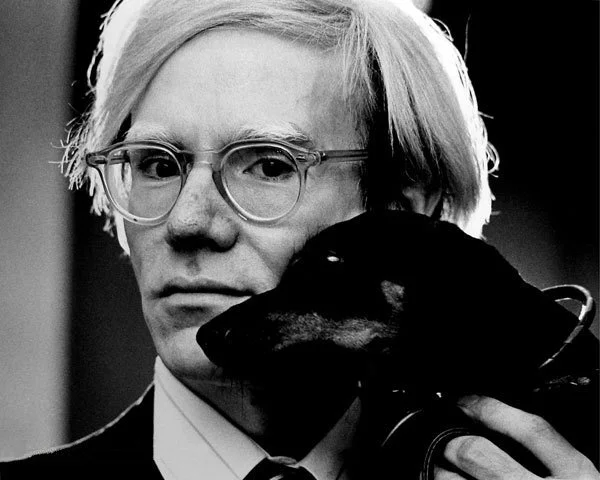Andy Warhol
The Pop artist best known for his silkscreens of cultural icons, including Jackie Kennedy, Marilyn Monroe, Chairman Mao, and Campbell’s Soup cans, was Born Andrew Warhola in 1928 to working class Czech parents. His early life was a mix of Byzantine Catholicism, a longing for the American Dream and a talent for drawing. Confined to bed as a child with a nervous disorder he immersed himself in comics, film & magazines.
He was 14 when his father died of poisoning, releasing insurance money which in spite of hardship was enough to send him to Carnegie Tech where he studied mainly commercial art. In his final year he worked on a blotted line technique that became his signature style. It was kind of a traced copy allowing him to produce multiples easily.
Andy Warhol By Jack Mitchell
Campbells Soup Cans by Andy Warhol
In 1949 he moved to New York to pursue a career in graphic design, his work appearing in department stores, greeting cards and major fashion magazines like Vogue. In the mid 1950’s he secured a deal with a shoe company I. Miller to produce a weekly advert in the New York Times. During this period he also dropped the final ‘a’ from his surname.
He began to exhibit some of his art work. His line drawings of nudes in a style similar to Matisse were met with indifference by critics. So he decided to shift his attention to fine art, and when asked if he wanted to be a great artist he replied “I’d rather be famous”
Pop Art is associated mainly with the 1960’s in America and Western Europe. Artists in this post war era were surrounded with imagery of popular or mass culture - comics, posters, billboards, record covers, movies, adverts of fast food, etc. Using this as source material could be seen as a positive comment on the celebration of modern life and consumerism, but critics said it looked unoriginal and ordinary, not serious enough to be art.
Marilyn Monroe Silk Screen Prints by Andy Warhol
In 1960 Warhol painted his first canvas’s based on comic strips and single cans of soup and fruit. He tried to paint as clean a graphic an image as possible, with no gestural marks, which was difficult to achieve.
An epiphany came when he re-created his paintings by screen printing them. He could eliminate unwanted painterly marks and produce repetitions quickly and easily. He then moved his studio which became known as ‘The Factory’. Soon he had assistants working in an assembly line helping to mass produce his art. Because the screen printing process could include photographs, images could be taken from a variety of sources including brand labels, newspapers, film stills and publicity shots of Hollywood stars. The death of Marilyn Monroe in 1962 prompted him to choose an image of her and reproduce it in multiple colours - arguably some of his most iconic work. In 1965 he began making short films, with an early video recorder. He also managed the band ‘The Velvet Underground’ adding a backdrop of films to their concerts. In 1968 Warhol was shot at close range by Valerie Solanas, in a dispute about her misplaced play she had written. He spent two months in hospital, and in some ways he never fully recovered. Despite this, he launched ‘Interview’ one of the first celebrity magazines, and spends a lot of time at the infamous Studio 54, a nightclub filled with musicians, actors and models - some of whom were immortalised as one of his silkscreen portraits.
The Andy Warhol plaque in Manhattan, at his former Town House in New York.
Would you love to paint like Warhol? Join us for our 10 week All-Abilities course and explore wide range of mediums and artistic styles. These art classes are suitable for all abilities, including complete beginners. We explore everything from architecture to portraits, using pencils, charcoal, pastels, watercolour, gouache and acrylics.




